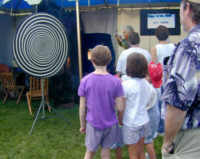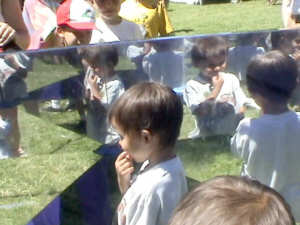 |
Follow up Web pages for Oregonians for Rationality booth Children's Pavilion Email webmaster |
 |
 |
Follow up Web pages for Oregonians for Rationality booth Children's Pavilion Email webmaster |
 |
|
Details
WEB
VERSION of the above handout
|
Some things anyone can do to better understand science and math. Abstractions Oversimplification The undeniable Relevance--Irrelevance
Science is not what it seems at first glance. . WEB VERSION of the above poster. Let Ralph Estling be your guide thru the countryside around Porlock. |
Previous years at O4R
booth
For detailed puzzle explanations go to the blue, "Numbered exhibits" chart on the 2003 page, But the puzzle-solvers page, that is, no answers or big clues, is HERE. |
| These follow-up pages have links into
the science sections of the explorepdx.com web
site and the Knowledge for Use
web site. The links are interconnected to form a mini-web: different
approaches lead to the same science concepts from different directions.
On the web pages, many of the pictures are active links: Click on them. |
Da Vinci Days, 2006 is now past, and these web pages remain to help those who wish to stretch their experiences. Much of what was in the O4R booth is intended to arouse curiosity. There's a huge territory which that curiosity can lead into. Click away!
|